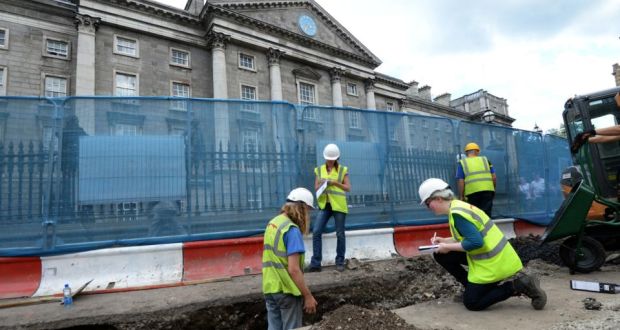The construction of the new Luas line in front of Trinity, which began in January 2014 as part of the Luas Cross City project, is due to be completed in March of next year, The University Times has learned.
Once work is completed the new track will split at College Green, creating two new routes — one going up Westmoreland Street and the other across College Street, with both continuing into the North side. The closest stop to Trinity, on which work began in July, will be located on the south side of College Street.
Speaking to The University Times via email, Local Liaison Representative of Luas Cross City, Suzanne Angley, stated: “Our contractors advise that works in the entire College Green Area should be complete by Q2 next year”. This comes five months before the estimated completion date of September 2017 for the overall project.
Construction on College Green, which has been ongoing for over two years, has caused serious frustration for pedestrians and drivers alike, with roads and footpaths often closed or narrowed to allow work to continue during the day and night.
The €368 million project, which began in June 2013, will ultimately extend the Luas Green Line to interconnect with the Luas Red Line. Upon completion, it will include 13 new Luas stops, eight of which will be situated in the city centre area. Stops in the vicinity of Trinity will be on Dawson Street, Westmoreland Street, and the Trinity stop on the Pearse Street side of campus.
The final phase of the project will see testing of the line, beginning in the latter half of 2017 before the service will open to the public.
Some of the work on the new line last term prompted complaints from Trinity students living in Front Square and Botany Bay campus accommodation due to heavy construction, including digging and drilling, being carried out at night time. As a result, last year’s Trinity College Dublin Students’ Union (TCDSU) sabbatical officers ensured that earplugs were provided to affected students, and organised a meeting with the project contractors to request off-peak work times for the project.
During the initial stages of construction, workers discovered human remains directly north of Front Arch in July 2014. The remains of five skeletons were thought to be of medieval or Viking origin at the time of discovery, and have since been undergoing scientific testing and carbon dating.







